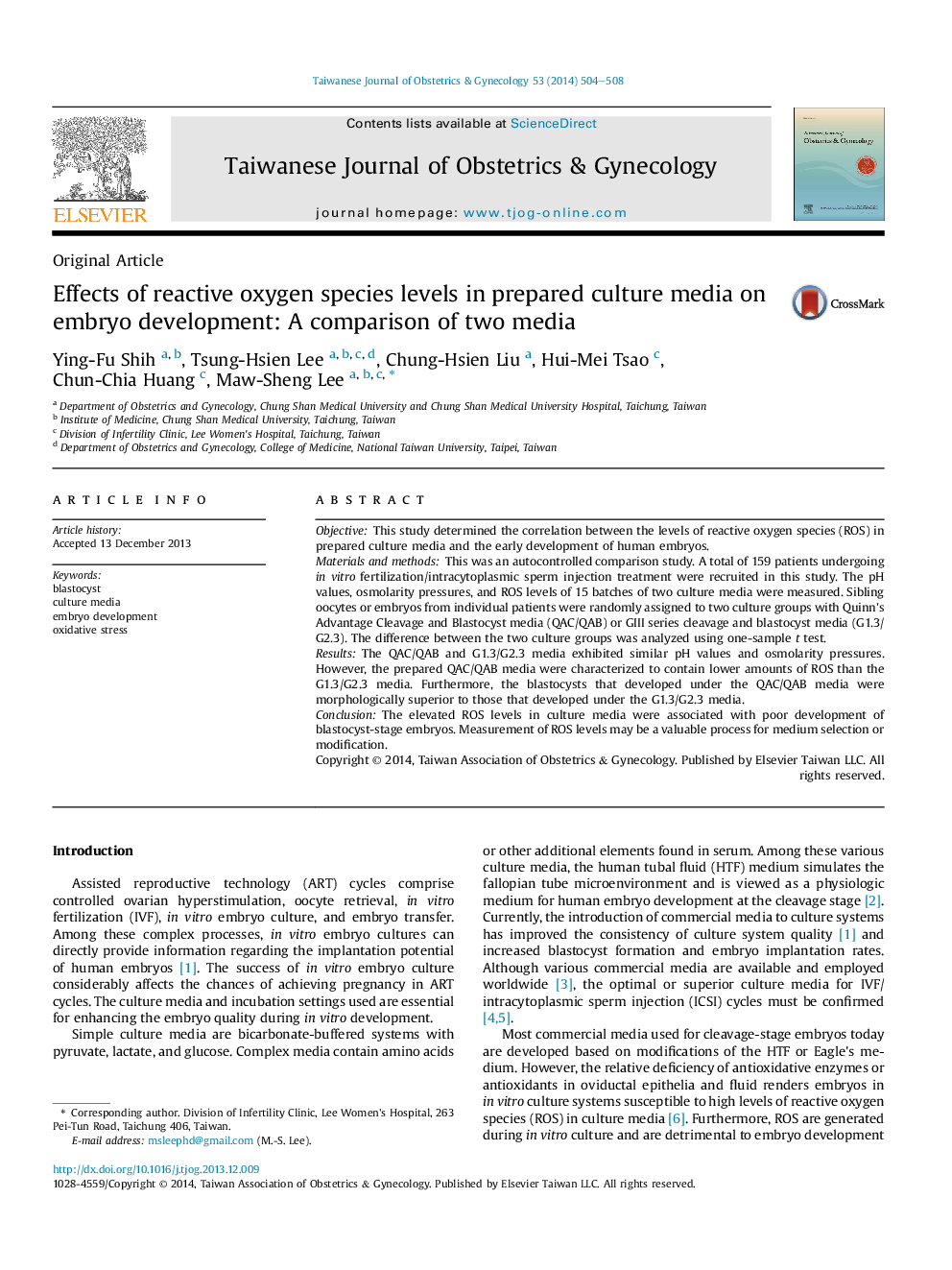| Article ID | Journal | Published Year | Pages | File Type |
|---|---|---|---|---|
| 3974947 | Taiwanese Journal of Obstetrics and Gynecology | 2014 | 5 Pages |
ObjectiveThis study determined the correlation between the levels of reactive oxygen species (ROS) in prepared culture media and the early development of human embryos.Materials and methodsThis was an autocontrolled comparison study. A total of 159 patients undergoing in vitro fertilization/intracytoplasmic sperm injection treatment were recruited in this study. The pH values, osmolarity pressures, and ROS levels of 15 batches of two culture media were measured. Sibling oocytes or embryos from individual patients were randomly assigned to two culture groups with Quinn's Advantage Cleavage and Blastocyst media (QAC/QAB) or GIII series cleavage and blastocyst media (G1.3/G2.3). The difference between the two culture groups was analyzed using one-sample t test.ResultsThe QAC/QAB and G1.3/G2.3 media exhibited similar pH values and osmolarity pressures. However, the prepared QAC/QAB media were characterized to contain lower amounts of ROS than the G1.3/G2.3 media. Furthermore, the blastocysts that developed under the QAC/QAB media were morphologically superior to those that developed under the G1.3/G2.3 media.ConclusionThe elevated ROS levels in culture media were associated with poor development of blastocyst-stage embryos. Measurement of ROS levels may be a valuable process for medium selection or modification.
